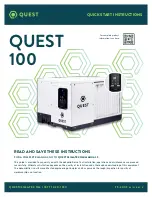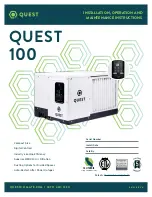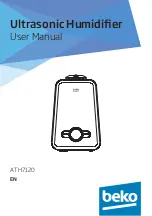
SRL Service Manual
Revision 00
July 2007
Page 33 of 56
8. Dryer Operating Modes
In most applications, the air stream passing through the refrigerated dryer changes in pressure,
temperature and flow rate throughout the day and throughout the year. This is due to external
influences such as ambient temperature, and the pattern of usage of the air in the application.
As the temperature, pressure and flow of the incoming air flow varies, so does the amount of heat the
refrigerant absorbs. If the flow of refrigerant did not constantly adjust to match this incoming heat
load, the temperature of the evaporator (and therefore the outlet dewpoint of the air) would increase
as the heat load increased, and decrease as the heat load decreased. If the temperature in the
evaporator dropped below freezing, the forming condensate would freeze, and the evaporator would
quickly block with ice.
Therefore it is vital that the refrigerant circuit be constantly controlled to maintain a steady temperature
(and therefore pressure) in the evaporator. Ultimately the temperature in the evaporator is maintained
at about 35 to 39 degrees Fahrenheit – just above freezing. In this way, the dryer provides the lowest
possible dewpoint, while keeping the condensate in liquid form so it can be removed.
8.1 Continuous
Mode
When Parameter C7 is set to “Con” the dryer operates in continuous mode. This can also be called
direct expansion, or non-cycling mode. The refrigerant compressor runs continuously and variations
in the thermal load are handled by means of the hot gas bypass valve. The hot gas bypass valve
monitors the pressure in the suction line between the evaporator and the compressor. As the
pressure decreases – signaling a lower heat load, and therefore less evaporation is taking place in the
evaporator - it begins injecting hot high pressure gas from the compressor discharge to keep the
pressure (and therefore temperature) steady.
Note that in this arrangement the solenoid upstream of the Hot Gas Bypass valve is constantly open.
















































